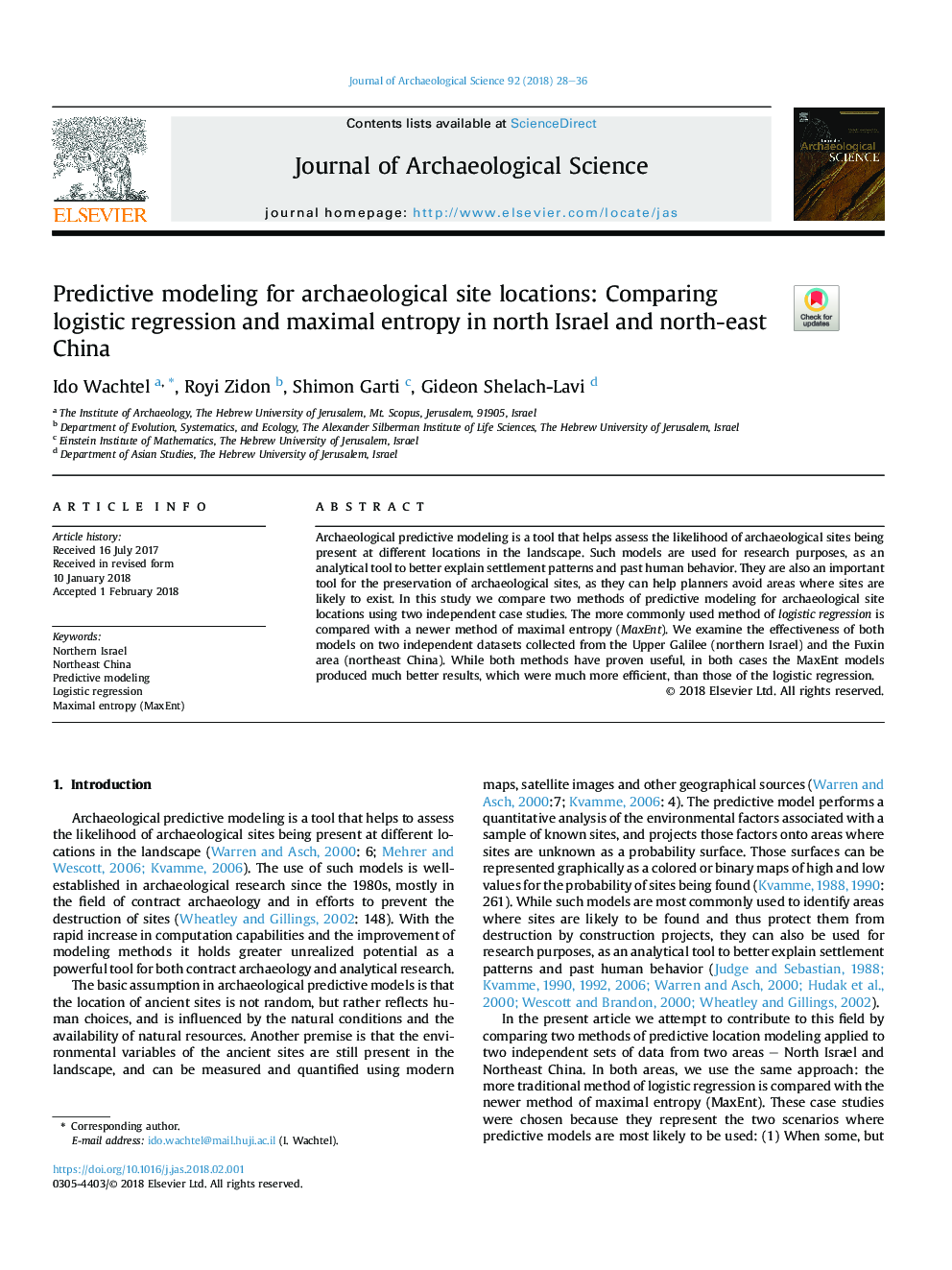| Article ID | Journal | Published Year | Pages | File Type |
|---|---|---|---|---|
| 7440955 | Journal of Archaeological Science | 2018 | 9 Pages |
Abstract
Archaeological predictive modeling is a tool that helps assess the likelihood of archaeological sites being present at different locations in the landscape. Such models are used for research purposes, as an analytical tool to better explain settlement patterns and past human behavior. They are also an important tool for the preservation of archaeological sites, as they can help planners avoid areas where sites are likely to exist. In this study we compare two methods of predictive modeling for archaeological site locations using two independent case studies. The more commonly used method of logistic regression is compared with a newer method of maximal entropy (MaxEnt). We examine the effectiveness of both models on two independent datasets collected from the Upper Galilee (northern Israel) and the Fuxin area (northeast China). While both methods have proven useful, in both cases the MaxEnt models produced much better results, which were much more efficient, than those of the logistic regression.
Related Topics
Physical Sciences and Engineering
Materials Science
Materials Science (General)
Authors
Ido Wachtel, Royi Zidon, Shimon Garti, Gideon Shelach-Lavi,
